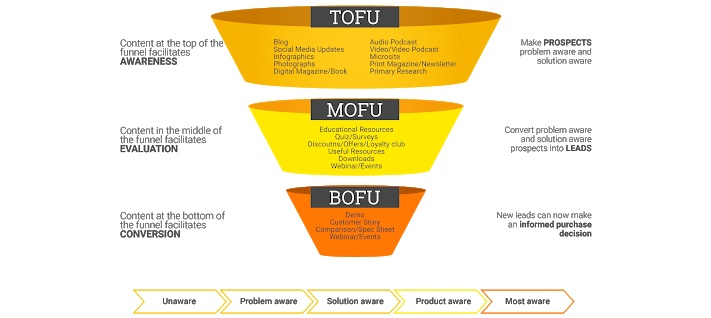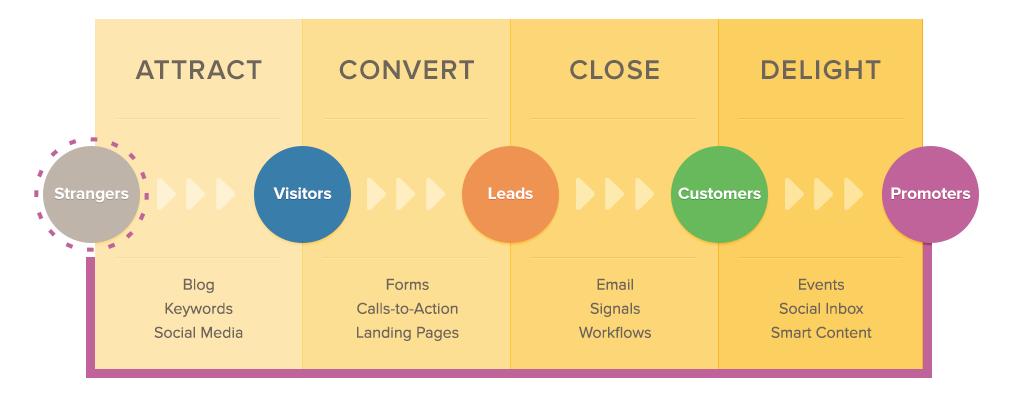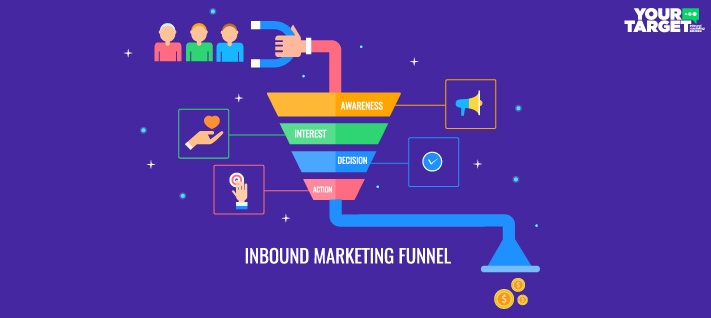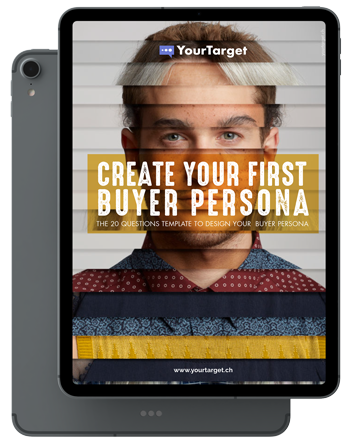Marketing is one of the major factors when it comes to the expansion of any business. It is an umbrella term which cannot be justifiably defined as ‘The action or business of promoting and selling products or services, including market research and advertising’. Although in layman terms, it can be said that, marketing follows the steps of attracting prospective customers, keeping them interested in your product, and finally converting them into actual buyers.
Marketing can be done in numerous ways. It is not restricted to just a face-to-face approach. Due to the growing ease with which more and more people can be reached, there is an endless scope for marketing, along with the endless methods of marketing. There are many different types of marketing such as Content marketing, Social Media marketing, Digital marketing, Outbound Marketing Inbound Marketing, etc. Here we will be discussing in-depth about Inbound Marketing.

What is Inbound Marketing?
Inbound marketing is the process of attracting prospective customers to products and services which they are currently not ready to buy, keeping them engaged through content creation, emails, newsletters, etc. and then turning them into actual customers. The whole process involves nurturing the customers throughout the process of what we call as the ‘buyer’s journey’.
The whole process of Inbound Marketing is mainly achieved through creating content which is specifically designed to appeal to the customer’s needs and desires. This content is shared via social media, videos, podcasts, Search Engine Optimization (SEO), newsletters, blogs, ebooks, etc.
Inbound Marketing vs. Outbound Marketing
Outbound marketing is the name given to the traditional way of marketing. Here, the attention is more towards finding as many customers as possible, rather than retaining or nurturing the already present leads. Outbound marketing is also known as Interruption Marketing by people, as its strategies include promoting a product through cold calling, direct emails, continued advertising, promotions, public relations and sales. The major disadvantage of Outbound Marketing is that most of the efforts usually go in vain since a specific audience is not targeted, therefore many of the people do not turn out to be their prospective customers.
On the other hand, inbound marketing tries to interact with potential customers by providing them with interesting and attractive content. It is conducted more through the online platform and it uses its content to help the customers find the business and the brand that they are already searching for, more easily. Inbound marketing is more about providing the customer with the content that they are interested in to draw them towards your business, rather than pushing your way to the audience, whether they are interested or not.
The Inbound Marketing Funnel

The Inbound Marketing funnel is used to demonstrate the fact that not all the visitors to your business website are necessarily interested in your products or services. It has three different stages, which have a specific order and are arranged according to the number of prospects that are present at each stage, hence forming a funnel. It represents the journey of the customers from the time they become aware of your product or service, till the time they purchase it. This funnel tells the marketers what to do and when to do it. The three main stages of this funnel are TOFU (Top of the Funnel), MOFU (Middle of the Funnel) and BOFU (Bottom of the Funnel).
“ToFu, MoFu, BoFu are not just magic words, they are part of a complex marketing strategy.”Tweet
What are TOFU, MOFU, BOFU?
1. TOFU (Top of the Funnel)
About 85% of the people who visit your business website on the internet, fall under this category. During this stage it is very important to have the knowledge about who these visitors are and what they are interested in. This stage is all about making these visitors aware of what the problem is that they might be experiencing and how your products or services can help solve this problem for them.
At this stage, majority of the visitors are not ready to buy your products and services. Therefore, the most important goal of TOFU is to transform these visitors into prospective customers, who are aware of what they need, by providing them with information and content that they are interested in so as to hook them on your products and services. They should be interested enough to provide you with their contact for further information.
Once you get their information, you can start providing them with more interesting content in the form of blogs, social media updates, newsletters, photographs, infographics, audio podcasts, videos, ebooks, etc.
2. MOFU (Middle of the Funnel)
About 10% of the people who visit your business website on the internet, fall under this category. These are the people who you have converted into prospective customers in the TOFU stage. They are what we call as ‘shoppers’, who are already aware of what they need to solve the problem that they are facing, and are ready to look for options to buy it. They will look for various options, evaluate them and then choose the one that they find most suitable.
This is the stage where you provide your prospective customers with as much information about yourself and placing yourself as the market leader by building trust between them and the business. The visitors now are looking for specific products or services, even if they do not want to buy it yet. Therefore, now is your time to turn your prospective customers into leads, who believe that you have the solution to their problem.
This is done by providing them with discounts/offers, educational resources, quizzes, surveys, webinar, events and much more.
3. BOFU(Bottom of the Funnel)
This is the category where only about 5% of the visitors to your business website fall. These people are the leads, whom we call the ‘buyers’ who are most likely to purchase your goods and services. They are the most knowledgeable crowd, who knows just what they want and from where they want it. Since they are the most profitable crowd, it is most important to retain a good relation with these visitors by nurturing them and turning them into happy customers.
At this stage you need to impress your customer and make them feel special. One of the way is by sending them gift cards, coupons, thank you cards, etc. Providing your leads with useful discount codes on their first purchase might also be one way to achieve this.
This is also your opportunity to know what the customer thinks of you by asking for their feedbacks and acknowledging them. This way you can try to improve your own business and further make the customer happy by indulging them.
Understanding the Flow of Inbound Marketing Funnel

Now that we have broadly discussed the inbound marketing funnel in terms of TOFU, MOFU and BOFU, let’s now understand the flow of this funnel.
1. Attract
This is the first stage of the inbound marketing funnel, where you have to impart useful and interesting knowledge about your products and services to strangers. These strangers might not be specifically looking for your business, but have a need to solve a problem, whose solution you might have.
At this stage, with the correct use of Search Engine Optimization (SEO), Inbound Content, Blogging, Social Media Marketing, etc., your business will be put in front of prospective customers.
2. Convert
At this stage, you have to convert prospective customers into leads by providing them with the content that they desire. Your main aim is to get the contact information of the visitor, so that you can further provide them with helpful and enticing information.
Through their contact, you can keep updating them through call-to-action, ebooks, newsletters, infographics, landing pages, forums, etc.
3. Close
At this stage, you are most likely to make a business transaction with the lead. Hence it is a very crucial stage where your leads get turned into actual customers.
The most important tactics to achieve customers from leads are emails, signals, workflows, list segmentation, etc.
4. Delight
This is the last stage of the flow, which is almost always overlooked. Once you have converted your leads to customers, you should keep them in your contact to maintain a healthy relationship with them. This might help you to finally turn these customers to promoters! Once that is done, your promoters will cause a new cycle to start with new prospective customers.
This is done by regularly providing them information about events, surveys, personalized web content, social inbox, etc.
This is all you need to know if you are looking for successfully converting your own website visitors to prospective customers, to leads and then finally to actual customers!
Remember your funnel has to be tailor-made on your buyer personas.
Start designing yours with our free template!

